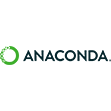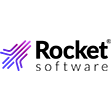
Enabling DataOps for Analytics
Modern enterprises need to quickly deliver the right data to a growing data consumer audience to drive strategic initiatives, often encompassing data science and machine learning, and thereby create competitive advantage. But many of these projects are failing because yesterday’s processes and systems can no longer meet today’s analytics requirements. Traditional data pipelines are breaking, and data quality is suffering.
We know well that data consumers’ expectations are rising. Analytics within the lines of business are demanding ever-higher volumes, variety and velocity of data, as well as rapid data transformation for analytics. Their SLAs are increasingly difficult to meet. Data managers within IT, meanwhile, are struggling with legacy systems and processes that were built for longer, batch-oriented cycle times. These two groups tend to speak different languages, further complicating efforts to collaborate.
DataOps seeks to fix these imbalances and put data-driven initiatives back on a sustainable footing. This emerging discipline encompasses processes and technologies that improve the speed, efficiency and flexibility of data pipelines. It incorporates agile development methodology, rapid response to user feedback and continuous data integration. Picture the lean manufacturing process, with data as the product.
Enter the Qlik Data Integration Platform. We partner closely with the world’s largest organizations, including half the Fortune 100, to fully harness the rich potential of large, highly- varied and high-velocity datasets.
With the Qlik Data Integration Platform, enterprises can realize the promise of DataOps for analytics.
- We provide agile cloud migration by fully automating the replication and synchronization of structured data and metadata across hybrid, cloud and multi-cloud environments. We optimize data transfer over the wide area network with encrypted multipathing, enabling zero-downtime migrations and ongoing real-time updates. Our real-time change data capture software minimizes source production impact and integrates with the industry’s broadest set of structured data sources and targets.
- We automate and accelerate the transformation of data for analytics. We auto-merge CDC change streams into data lake stores, on premises or in the cloud, then create, format and continuously update analytics-ready datasets – no hand scripting required. We also automate the data warehouse lifecycle, including modeling, DW creation and updates, greatly reducing your dependence on skilled developers.
- Finally, the Qlik Data Integration Platform speeds up how you catalog, manage, prepare, and deliver your trustworthy, actionable data to business users across your enterprise. You gain a secure, enterprise-scale repository of all the data your business has available for analytics, giving your data consumers a single, go-to catalog to find, understand, and gain insights from any underlying enterprise data source.
Together these solutions provide a comprehensive data integration platform to enable modern data architectures and deliver on the promise of DataOps for Analytics.
While enterprises are in the early stages of adoption, there is broad recognition of the problems driving the need for DataOps. Qlik is optimistic about the near- term upside for enterprises, based on initial successes among many of our customers. We see IT teams educating themselves on the right collaborative data management approach, making data seamlessly and continuously available, with faster initial delivery and rapid improvement cycles. DataOps will continue to gain importance as part of digital transformation initiatives, empowering IT leaders to focus more on improving communication, integration and automation of data flows enterprise-wide.
To learn more, visit qlik.com/DataOps






































